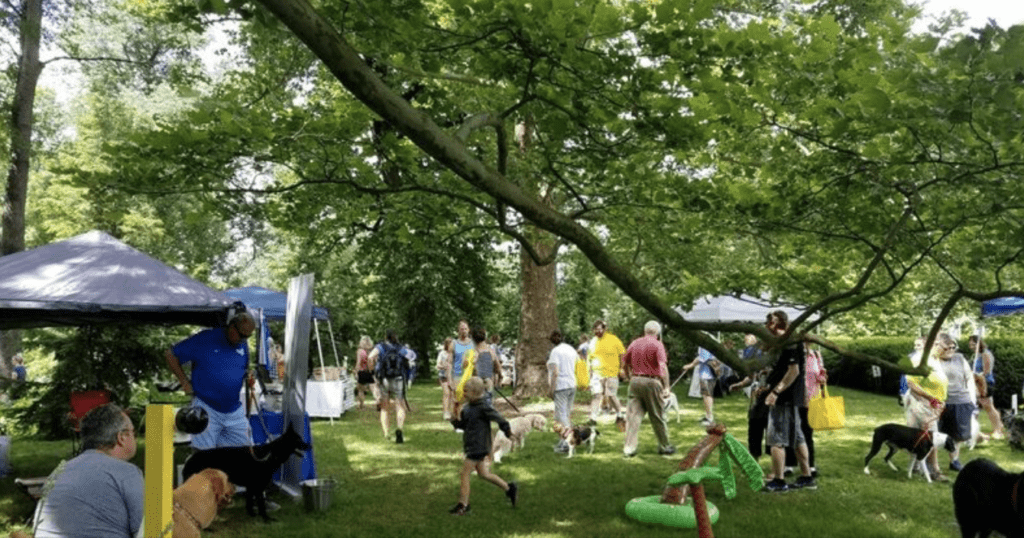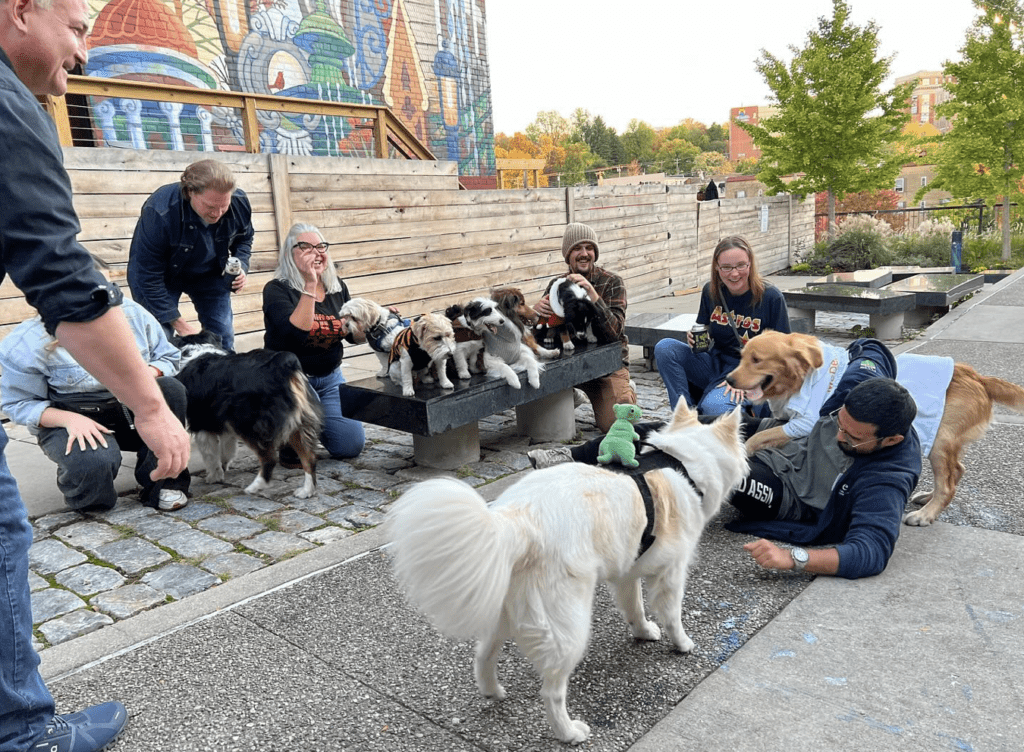Do you know the story of Stone Soup? It’s a folk story, with versions told in countries all over the world, about a stranger who comes to a poor village and convinces neighbors, one by one, to share ingredients to his recipe for stone soup, each contribution making the concoction richer and more delicious and culminating into a feast that feeds the entire village, creating connection and community in the process.
Nestor Melnyk, and his wife, Cassandra Clement, have a similar story about how one boy and dog led to a movement in their Clifton neighborhood that’s created a newfound community and connection for their family and others.

Troy, now 24, is the boy who inspired a movement now appropriately named PUPP, Pop Up Puppy Party. Troy has Angelman Syndrome, a developmental disability. He enjoys water, swinging, and taking short hikes. He likes being with his family as much as he sometimes likes sitting and observing. Cassandra said that she realized as Troy aged and the difference between him and similarly-aged peers began to widen, the family unintentionally began to isolate themselves. “We felt so different, and it was hard to feel accepted,” she said.
Cassandra and Nestor were encouraged by Tim Vogt with the Starfire Council, a visionary organization working to build better lives for people with disabilities, to find new ways to connect with their neighbors with some intentional outreach to seek commonalities. According to Starfire, people with disabilities grow increasingly lonely and isolated as adults. Working with one person at a time, Starfire connects people to relationships and uncovers a person’s talents and passions so that they can thrive in their communities alongside their neighbors.
With Starfire’s encouragement, the family began to investigate opportunities for connection, one neighbor at a time, over coffee or dinner, collecting information by meeting with neighbors, many Cassandra had never met before, friends she had not spoken with in a while, acquaintances she knew from passing. When she and Nestor looked at data extracted from these conversations, they realized that one connection point among this diverse group of people was simple–dogs.
From there, PUPP began as a simple social gathering for people with dogs in a Clifton backyard. The feeling of community was so strong that this group was inspired to make their effort a little bigger and include more. One person had the idea to create a gathering at Clifton Plaza. “Much like the story of Stone Soup, each person contributed. One coordinated temporary fencing, one made a logo, and another made a Facebook page,” Nestor explained. The first official PUPP took place just weeks after this informal gathering and grew from there.
The group has continued to meet on the fourth Monday of every month. The dogs give the group a reason to gather, but Nestor said, the gatherings are not about the dogs, but also the people. ‘Not everyone who attends PUPP has a dog. Some people just like to come and watch, see the dogs, and be a part of something bigger,” he has observed. “We learned that an elderly woman who often joins our gatherings calls PUPP events the highlight of her month,” Nestor said. “She lives alone and had been feeling isolated and now is a part of a welcoming community.”
Cassandra added that neighbors who were once strangers are now friends. “Now that we’ve met at PUPP, we see each other at the grocery store, on the street, and all around town. We wouldn’t even know each other if it were not for PUPP,” she said, sharing anecdotes about how neighbors who were once strangers now support each other in small and extraordinary ways.

Cassandra and Nestor and many of the friends they have made through PUPP support a new dog park coming to Cincinnati Parks, so that the community building and connection that PUPP inspired can continue to flourish. “There are kickball leagues, art projects, and yoga classes that are great for many people, but a universally-designed dog park adds another layer of accessibility,” Nestor said—noting that Troy is often content to be a part of an activity by observing from afar and that scheduling for activities can be a challenge. A dog park gives place and purpose and can be active or passive. A permanent location within the safe confines of a neighborhood, visible from the street, is intrinsically welcoming.
Noting his own son’s challenges, Nestor supports looking at every project within a park as one that is always welcoming to everyone. “I wish we didn’t have to discuss a park’s accessibility. Imagine if every project was universally designed to be accessible from the start,” he said.
A new dog park is just one new project in Cincinnati Parks. Funds will also support the Doris Day dog park in Mt. Airy Forest. From there, with the beautiful collaboration of community, neighbors, and volunteers, Cincinnati Parks and Cincinnati Parks Foundation will help keep these spaces green, beautiful, and accessible to all.
Like the fabled stone soup, each improvement and program in Cincinnati Park help grow our community and connection more and more.
